Recent Articles
Popular Makes
Body Types
2018 Chevrolet Equinox Road Test and Review
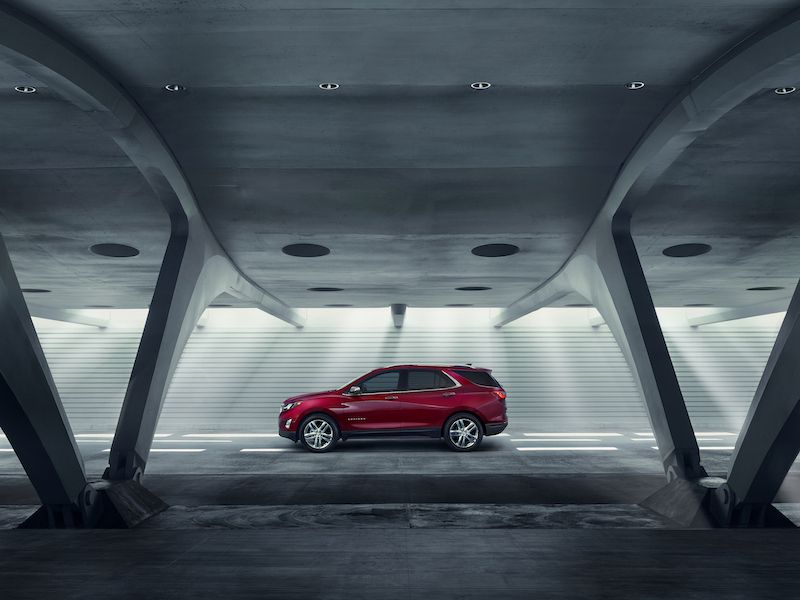
2018 Chevrolet Equinox ・ Photo by Chevrolet Media
I'm old enough to remember when the American automakers were under threat of losing the automotive game to Japan, so an American car that’s as good as the Asian competition always catches my eye—and that’s why the all-new 2018 Chevrolet Equinox stands out. This is a well-designed and well-executed 5-passenger SUV that proudly says to the competition, “Anything you can do, I can do better.”
Smaller outside, bigger inside.
2018 marks the first major change to the Equinox since it was introduced in 2005, and this new version is a clean-sheet redesign with an emphasis on better space and fuel efficiency. The new Equinox is quite a bit smaller than the old one: Overall length is down 4.7 inches, the wheelbase (distance between front and rear axles) is 5.7 inches shorter, and height drops by nearly one inch. You’d expect that making the Equinox smaller on the outside would make it smaller on the inside as well, but the new version offers more headroom, legroom and passenger room than the old Equinox. That’s a sign of good packaging efficiency, something that has been Honda’s stock in trade for ages. It looks like Chevrolet has figured it out, as well. The smaller size also helps the Chevrolet Equinox shed weight, as does strategic use of lightweight materials such as high-strength steel. We only have official weight figures for the base model, which is 3,327 lbs, but that’s nearly 450 lbs lighter than the comparable version of the outgoing Equinox. A better comparison is the new MINI Countryman: The Equinox is more than a foot longer and offers twice as much cargo space, and yet the two vehicles weigh about the same.
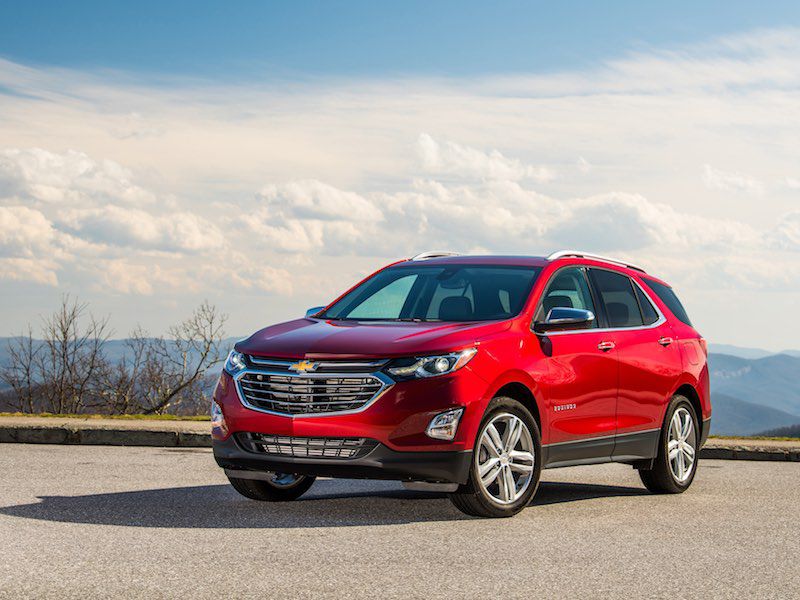
Photo by General Motors
Showin' off that new body!
The Equinox’s weight loss is reflected in the styling. Set the old and new versions side-by-side, and the old Equinox looks a bit paunchy; the new one is lean and lithe, and to my eyes looks a bit longer (even though it isn’t). Sharp creases in the sheet metal give the appearance of skin stretched tight over well-developed muscles, and the new taillights give it a family resemblance to other Chevrolet models. I’d stop short of calling it a real stunner; those body creases don’t really catch your eye unless the light is just-so, which, outside of an advertising agency photo studio, it rarely is. Even the extra-cost Crystal Red paint—a color that does wonders for Cadillac’s cars—has trouble bringing out the best in the Equinox. Orange Burst Metallic probably does the best job, but how many people, aside from the Duke Boys, want to drive around in an orange car?
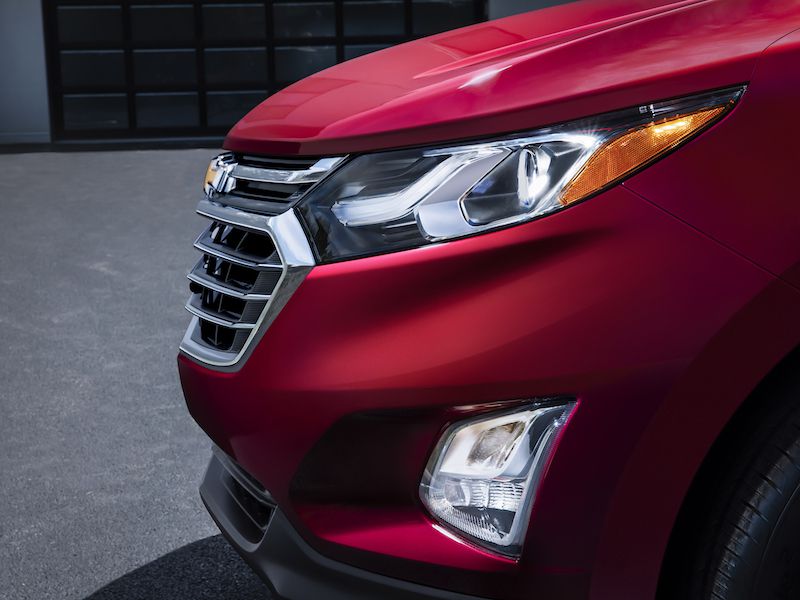
Photo by Chevrolet Media
Interior Improvements
The stylists have done an excellent job with the new Equinox’s interior. Like other contemporary Chevrolets, the design is both attractive and easy to use. Unlike the old Equinox, the designers have made good use of interior space, spreading the switchgear out and making all the buttons and switches easy to find and easy to use. And the design is lovely, with sweeping, soothing curves and high-end materials that give even the entry-level models a luxurious feel. Chevrolet offers several interior color choices, including many two-tone options; even the entry-level Equinox L comes with an upscale black-and-gray combo. The seats are upholstered in a high quality patterned cloth, and leather is offered in the top-of-the-line Premiere model.
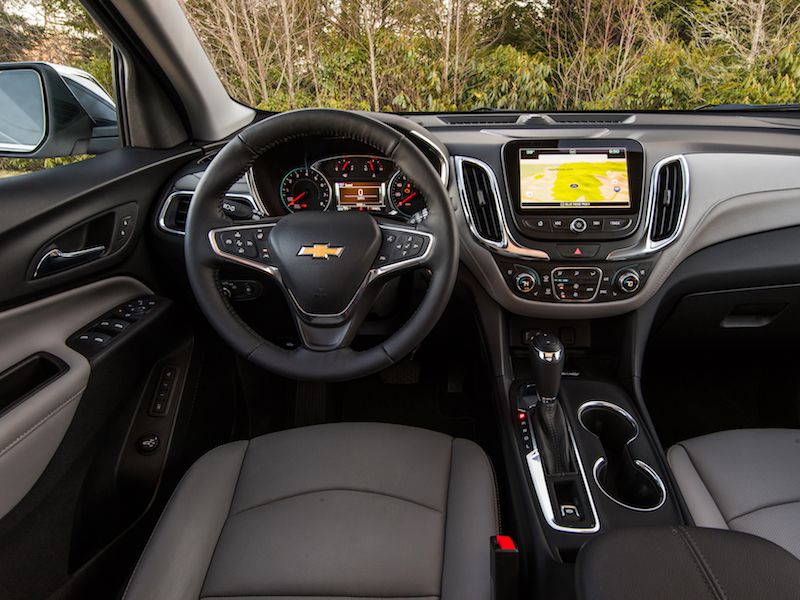
Photo by Chevrolet Media
Putting the "U" in SUV...
Handsome styling is all well and good, but in an SUV, functionality is more important, and the Equinox does indeed deliver. As for leg- and head-room, the Equinox trails the Honda CR-V, but never by more than an inch. The Equinox offers 29.9 cubic feet of cargo space, trailing the Honda by nearly ten cubic feet (okay, so maybe Chevrolet still hasn’t caught up to Honda in packaging efficiency), but there’s still plenty of room for groceries, luggage and camping gear. With the rear seats folded down, the Equinox offers 63.5 cubic feet of space, still well behind the CR-V. But folding down the rear seats is easy thanks to a pair of big release levers located right near the tailgate—a system not unlike the one used by Honda. And speaking of the tailgate, Chevrolet offers an optional power-opening unit with hands-free functionality. If the key fob is on your person, you can kick your foot under the bumper, and the tailgate will open (theoretically—I could never get it to work, though my colleagues had no problem).
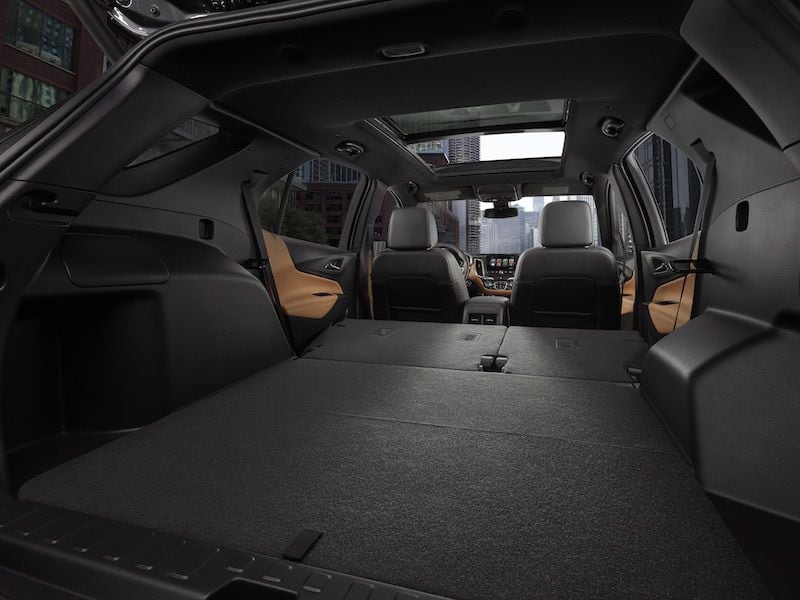
Photo by Chevrolet Media
Technology: OnStar and Wi-Fi
GM’s MyLink touch-screen infotainment system is standard in the Equinox, with higher trim levels getting a larger screen. This is one of my favorite systems, although I find that even the larger screen can get a bit cluttered when using the navigation system. But even if you don’t order your Equinox with a navigation system, you do get OnStar as standard. OnStar is a subscription-based system that performs several functions, including turn-by-turn directions (though you don’t get the moving map display of a traditional navigation system). More importantly, OnStar can detect if the Equinox is in a crash and will automatically put in a call for help—and if the occupants don’t (or are unable to) respond, the OnStar operator will call for emergency services, using OnStar’s built-in GPS transmitter to locate the vehicle. A telematics system like OnStar is, in my opinion, one of the best safety features offered on any model, and by itself is an excellent reason to buy the Equinox. Another nice-to-have aspect of OnStar is the 4G LTE hotspot. This system is subscription-based, but it’s handy to have, as it turns the car into a mobile Wi-Fi hot spot. The Equinox comes with Apple CarPlay and Android Auto as standard; as an Android user, I found the Wi-Fi hot spot especially handy, as I was able to have Google maps on the screen using the car’s Internet connection rather than my phone's somewhat parsimonious data plan.
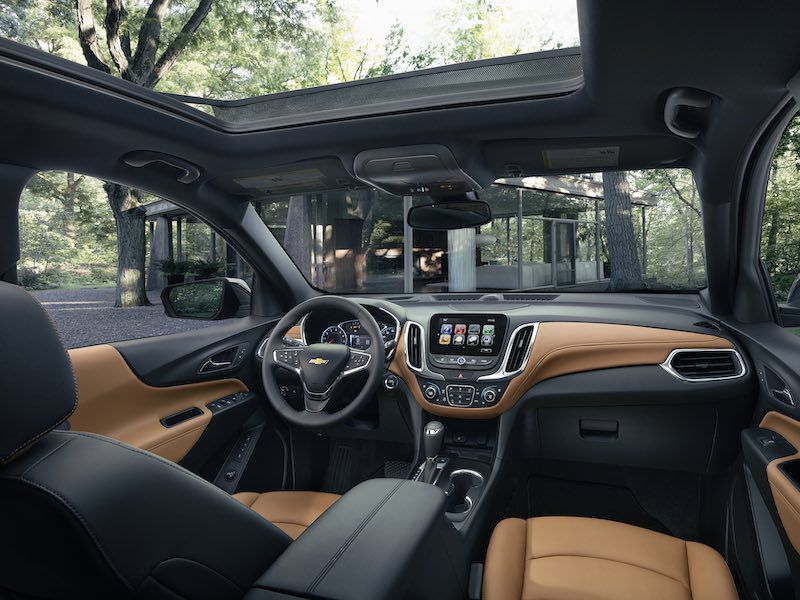
Photo by Chevrolet Media
All-Turbo Engine Lineup
There’s something rather interesting going on under the Equinox's hood: As with their midsize Malibu sedan, Chevrolet has gone to an all-turbocharged engine lineup. Most SUVs in this size class get a 4-cylinder engine of 2.5 liters or so, but the Equinox uses a 1.5-liter turbocharged engine. Horsepower is similar to a big four—170 horsepower and 203 lb-ft (for comparison, the Honda CR-V’s non-turbocharged 2.4-liter engine produces 184 hp and 180 lb-ft)—and most drivers will never be aware there’s such a tiny engine under the hood. Floor it off the line, and you’ll detect a bit of hesitation, but for regular driving—merging onto highways, nipping in and out of traffic, that sort of thing—the Equinox’s little engine works just fine. EPA fuel economy estimates are 26 mpg city/32 mpg highway with front-wheel drive and 24/30 with all-wheel drive, and I saw high-20s during a day of lazy back-road driving. More choices are on the way: Chevrolet will soon offer a 252-hp 2.0-liter turbocharged engine as a substitute for the traditional V6, along with a 4-cylinder turbodiesel that should deliver around 40 mpg on the open road.
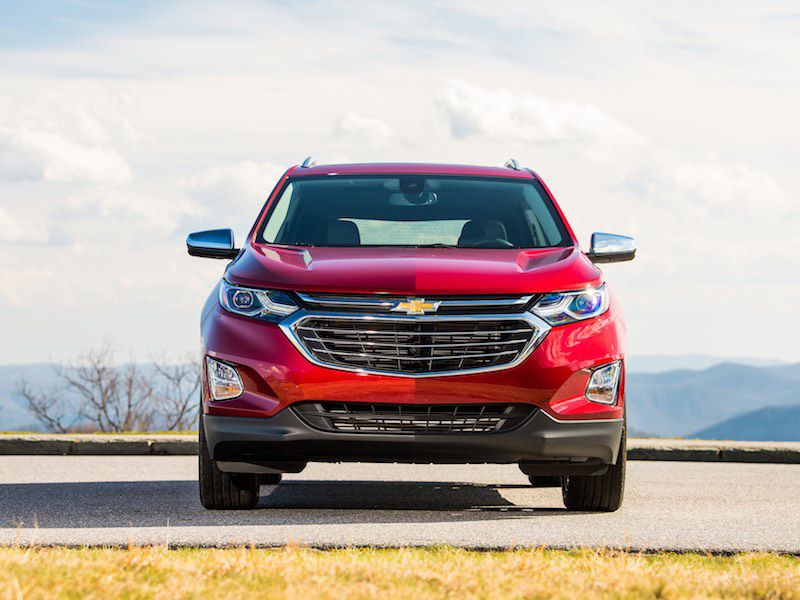
Photo by Chevrolet Media
Expensive at the high end.
One thing I expect from Chevrolet is good value-for-money. Pricing for the new Equinox starts just under $25,000, around the same as the entry-level Honda CR-V, and the base model (Equinox L) is good looking and decently equipped—keyless entry and ignition, a touch-screen stereo, and a backup camera are all standard equipment. But as you climb through the trim levels—LS, LT, Premier—and start adding options, the Equinox can get very expensive. At our press preview, we saw Premier models priced up over $40,000, and that was with the 1.5-liter engine; the 2.0-liter vehicles will inevitably be more expensive. That's quite a lot, especially considering that the Honda CR-V Touring tops out at $34,635.
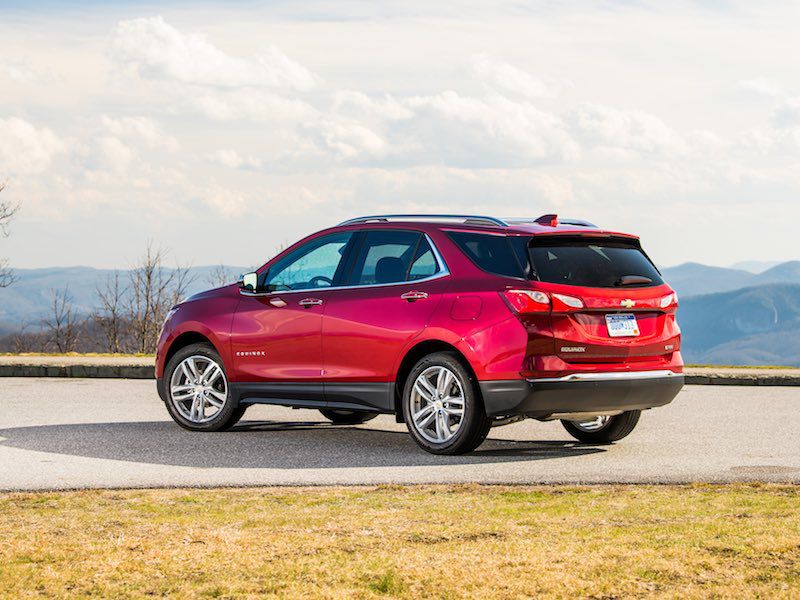
Photo by Chevrolet
Equinox: An SUV that deserves your attention.
As you can tell, I was favorably impressed by the Chevrolet Equinox. Though it can't claim superiority in any one area, it's a great all-rounder—comfortable, quiet, commodious, and decent to drive. The Honda CR-V remains the champ in interior space, and the high-end Equinox models are bound to give some buyers sticker shock. Still, this is one of the better 5-seat SUVs on the market, and if you're considering a mainstream SUV like the Honda CR-V, it'd be well worth your time to give the 2018 Chevrolet Equinox a test drive.
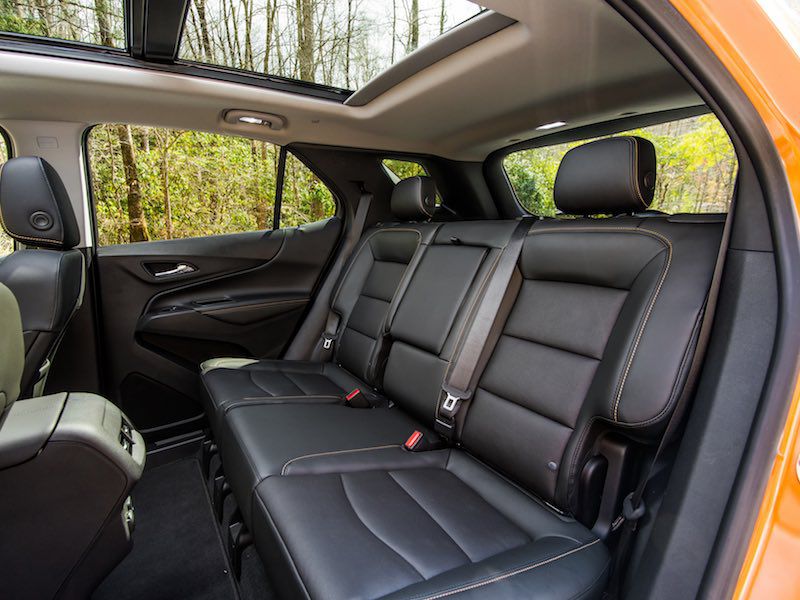
Photo by Chevrolet Media
Look out, Honda.
The SUV to beat in this segment is the Honda CR-V, which was freshly redesigned for 2017 and is devastatingly good. Though other SUVs have niches in which they perform well—the Mazda CX-5 is good fun to drive, for example, and Toyota’s RAV4 offers the only hybrid option in the segment—I find myself mentally comparing every 5-seat crossover to the CR-V. Most come up short in some way, but the new Equinox is the first that seems ready to go toe-to-toe with Honda. It’s not as sporty as the Mazda, and it doesn’t offer a hybrid drivetrain. But when it comes to the basics—utility, comfort, technology and overall competence—the Equinox does the job every bit as well as the CR-V. That’s no small accomplishment, and we're glad to see Chevrolet pulling it off.
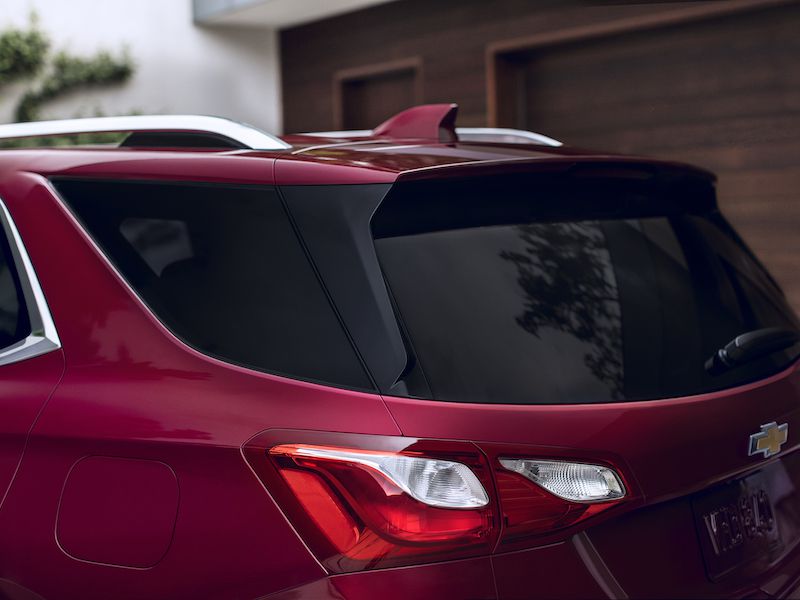
Photo by Chevrolet Media